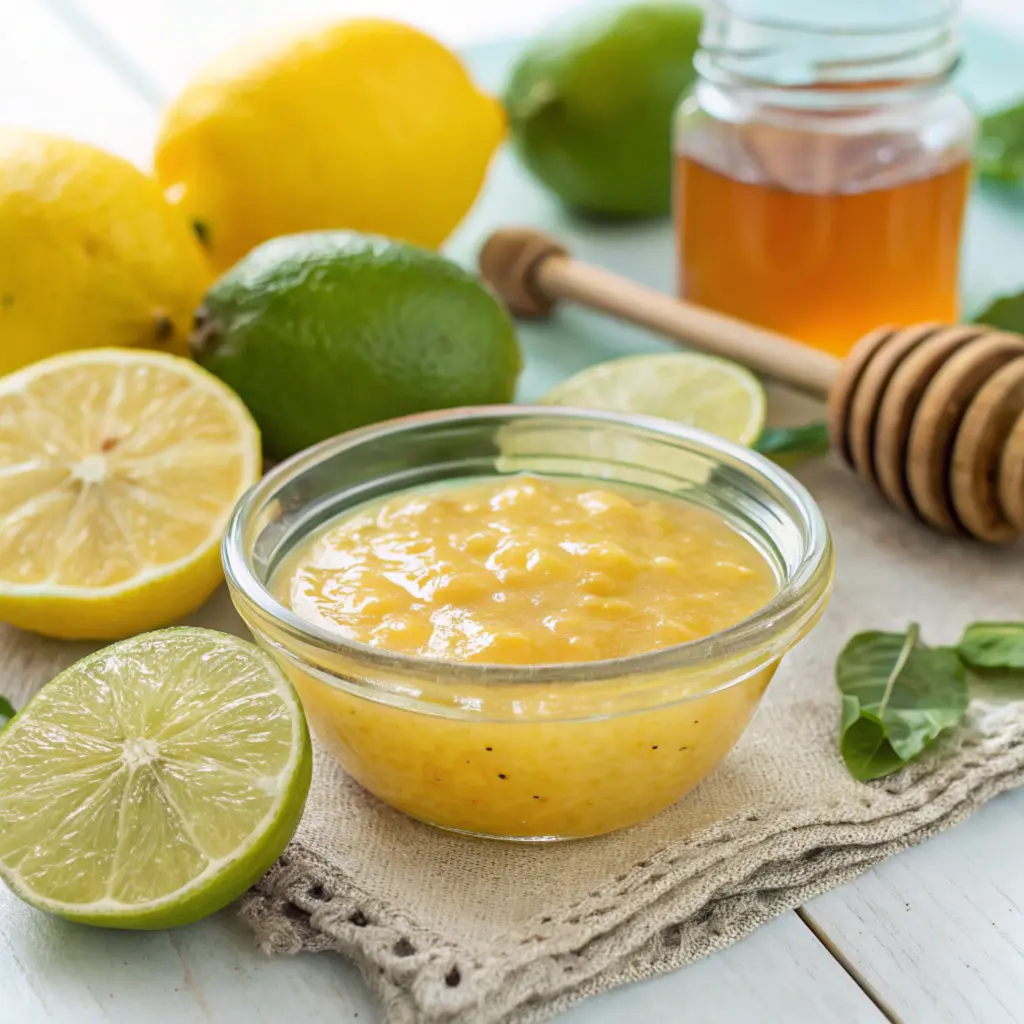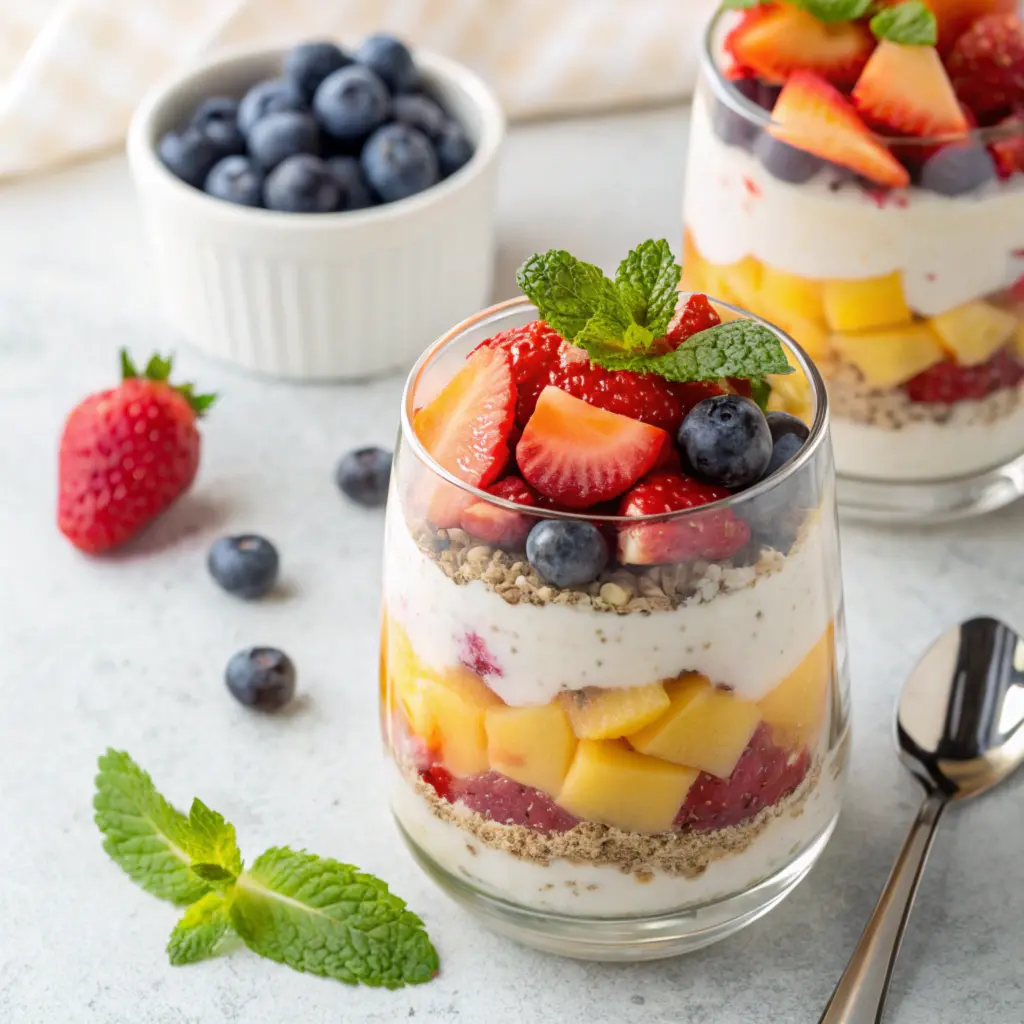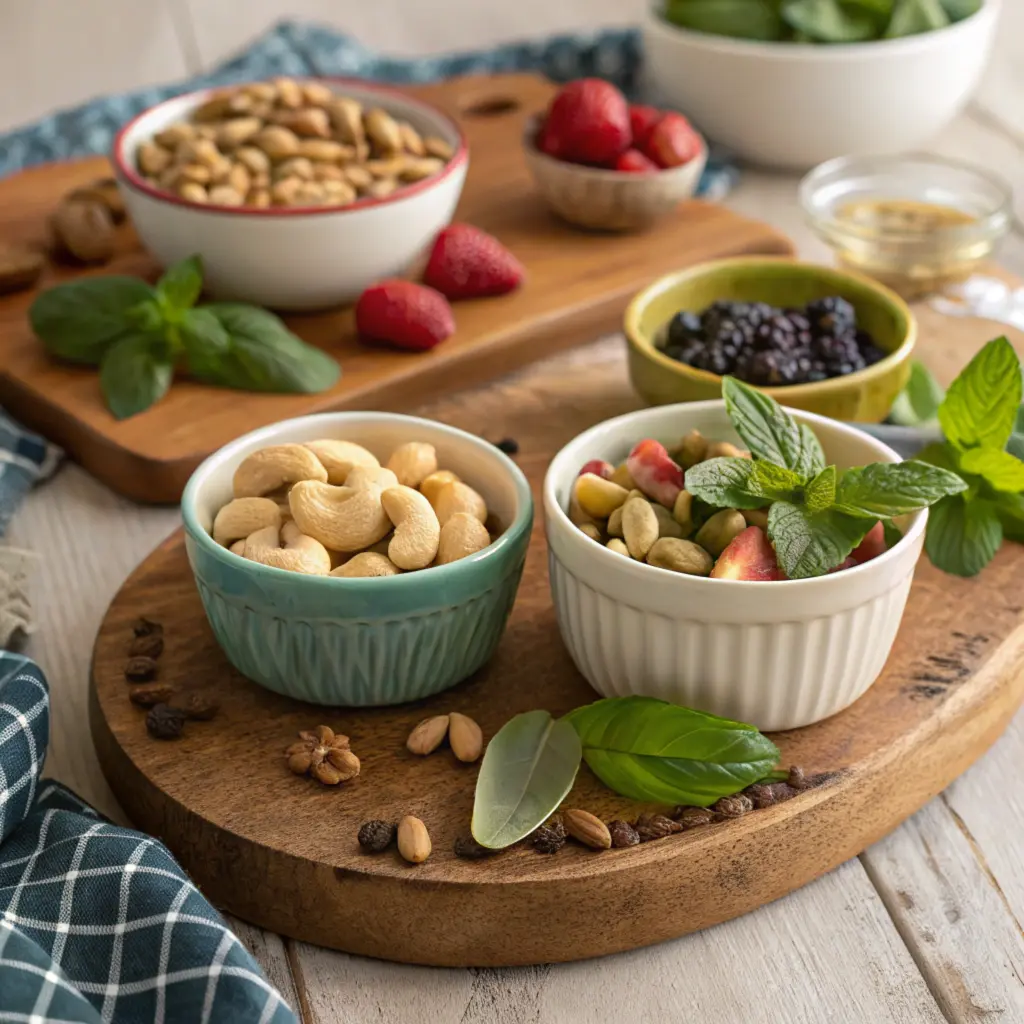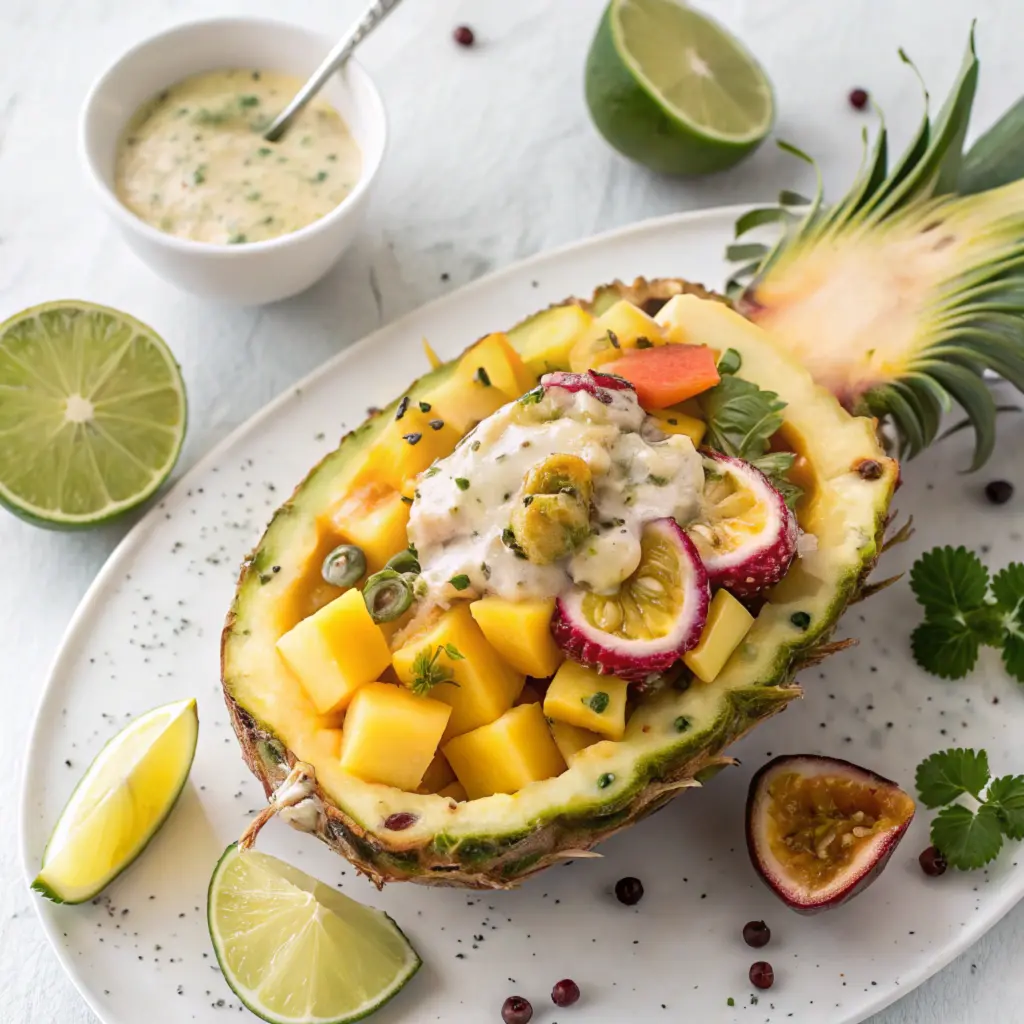Fruit salad dressing adds a delicious and complementary flavor to your favorite mix of fruits, making it more than just a simple bowl of produce. In this guide, we’ll break down what fruit salad dressing is made of, explore variations, and even provide tips for crafting the perfect dressing. Whether you’re preparing for a family brunch or a summer picnic, this article will give you all the information you need to elevate your fruit salads.
Understanding Fruit Salad Dressing
Definition and Purpose of Fruit Salad Dressing
Fruit salad dressing is a versatile blend designed to enhance the flavor, texture, and appeal of fresh fruit salads. Its purpose goes beyond just taste, as it helps balance sweetness, adds creaminess, and prevents oxidation of fruits. By using thoughtfully crafted dressings, you can elevate the simplest fruit combinations into gourmet dishes perfect for any occasion.
Historical Background of Fruit Salad Dressings
The concept of fruit salad dressings has evolved over centuries. From honey and vinegar combinations used in ancient times to the more complex blends of yogurt and citrus we see today, dressings have always aimed to complement and preserve the freshness of fruits. The modern variations reflect the diversity of global culinary traditions, incorporating flavors and ingredients from various cultures.
In Mediterranean cuisine, for example, combinations of honey, lemon, and olive oil were commonly used to dress fresh and dried fruits. In tropical regions, coconut milk and lime served as popular bases for fruit salads, highlighting the unique ingredients native to the area.
Common Ingredients in Fruit Salad Dressings
Base Components of Fruit Salad Dressings
Citrus Juices
Citrus juices like lemon, lime, and orange are foundational in fruit salad dressings. They add tanginess, preserve freshness, and prevent fruits from browning. For example, orange juice complements tropical fruits, while lime juice works well with berries. Lemon juice is also a great option for adding zest and brightness to the mix. You can even experiment with blood oranges for a deeper flavor and vibrant color.

Sweeteners
Sweeteners such as honey, sugar, and agave syrup enhance the natural sweetness of fruits. Honey, in particular, pairs beautifully with citrus-based dressings, while agave is a vegan-friendly alternative. Maple syrup can also be used for a deeper, more caramel-like sweetness. For a low-calorie option, stevia or monk fruit sweeteners work well without compromising taste.
Dairy Elements
Creamy ingredients like yogurt, sour cream, and cream cheese provide a smooth texture and a rich flavor. These are perfect for making fruit salads more indulgent and dessert-like. Greek yogurt is a popular choice due to its thick consistency and high protein content. For a tangy twist, kefir or buttermilk can be used as a base for your dressings.
Flavor Enhancers
Vanilla extract, almond extract, or a pinch of cinnamon are commonly added to fruit salad dressings to elevate their flavor. Fresh herbs like mint or basil can also be incorporated for a refreshing twist. For adventurous cooks, spices like ginger, turmeric, or even a hint of chili powder can add unexpected depth.
Oils and Nuts
While not traditional in all fruit salad dressings, adding a splash of light olive oil or a tablespoon of nut butter can create a richer dressing. Almond or cashew butter pairs particularly well with tropical fruits.
Types of Fruit Salad Dressings
Varieties of Fruit Salad Dressings
Citrus-Based Dressings
Citrus-based dressings are light and refreshing, often combining lemon, lime, or orange juice with sweeteners. These pair well with tropical fruits and berries. A classic citrus vinaigrette might include lemon juice, olive oil, and honey for a tangy yet smooth dressing. Adding zest to these dressings can heighten the citrusy flavor.
Creamy Dressings
Creamy dressings use yogurt, sour cream, or mayonnaise as a base. These are ideal for creating rich and indulgent fruit salads. For example, a classic creamy dressing might include Greek yogurt, honey, and a hint of vanilla. Adding a splash of orange juice can enhance the flavor further. For a tropical twist, consider mixing coconut cream with lime juice.

Honey and Poppy Seed Dressings
A blend of honey, poppy seeds, and a splash of citrus juice creates a sweet and textured dressing. This type is particularly popular for summer fruit salads. The tiny poppy seeds not only add a nutty flavor but also create a visually appealing texture. You can also experiment with chia seeds as a substitute for poppy seeds, adding extra fiber.
Herb-Infused Dressings
Herb-infused dressings incorporate mint, basil, or even rosemary to add complexity. These dressings are perfect for pairing with melons and stone fruits like peaches. For instance, a mint-lime dressing can transform a simple watermelon salad into a gourmet dish. For a savory-sweet profile, try blending cilantro with lime and honey.
Nut-Based Dressings
Nut-based dressings, such as almond or cashew cream, are becoming increasingly popular. These vegan-friendly options offer a rich and nutty flavor, pairing beautifully with tropical and berry fruit salads. To make a quick almond butter dressing, blend almond butter with a dash of maple syrup and lemon juice.
Chocolate and Dessert Dressings
For a dessert-style fruit salad, chocolate-based dressings can certainly be a delightful choice. For example, melted dark chocolate mixed with a splash of cream or coconut milk can create a truly decadent drizzle. Moreover, adding espresso powder to the chocolate mix enhances its depth, making it perfect for pairing with fruits like strawberries or bananas. As a result, your fruit salad can transform into an indulgent dessert.

Homemade vs. Store-Bought Dressings
Comparing Homemade and Store-Bought Fruit Salad Dressings
Advantages of Homemade Dressings
Homemade dressings allow for complete customization of ingredients. You can adjust sweetness, choose fresh herbs, and avoid preservatives, resulting in a healthier option. Additionally, homemade dressings are cost-effective and free of unnecessary additives. They also provide the opportunity to experiment with unique flavor combinations that may not be available in store-bought options.
Considerations for Store-Bought Dressings
Store-bought dressings offer convenience and a wide variety of flavors. However, they may contain added sugars and preservatives that could alter the natural taste of your fruit salad. Reading labels carefully is essential to avoid hidden additives and excess sugar. Store-bought options are best suited for last-minute preparations or when experimenting with unfamiliar ingredients.
Health Implications
Homemade dressings tend to have fewer additives and less sugar, making them a better choice for health-conscious individuals. They also allow you to cater to dietary restrictions like vegan or gluten-free diets. Store-bought options, however, can be beneficial in a time crunch and often come in portion-controlled packaging to reduce waste.
Crafting Your Own Fruit Salad Dressing
Creating Homemade Fruit Salad Dressings
Selecting Ingredients
Choose the freshest ingredients to ensure a vibrant flavor. For example, use freshly squeezed citrus juices, high-quality honey, and fresh herbs. Organic produce can further enhance the natural taste of the dressing. When selecting dairy elements, opt for full-fat versions for a richer taste or low-fat alternatives for lighter dressings.
Balancing Flavors
A great fruit salad dressing balances sweet, sour, and creamy elements. Adjust sweetness with honey or sugar and balance acidity with lemon or lime juice. For extra depth, a small pinch of salt can enhance the sweetness without overpowering. Adding a dash of balsamic vinegar can also provide complexity.
Preparation Techniques
Use a whisk or blender to emulsify ingredients for a smooth and consistent dressing. If using yogurt, fold in gently to maintain its texture. For herb-infused dressings, muddle the herbs slightly to release their oils before mixing. Experiment with blending fresh fruits like strawberries or mangoes directly into the dressing for a vibrant color and taste.
Storage Tips
To store homemade dressings effectively, you should use airtight containers and refrigerate them immediately. Moreover, they are best used within two days to preserve their freshness. If the dressings contain dairy, be sure to keep them at a consistent cool temperature to prevent spoilage. In addition, using small mason jars for portioned storage not only maintains freshness but also makes it easy to serve as needed.
Pairing Dressings with Fruits
Matching Fruit Salad Dressings with Fruits
Tropical Fruits
Mangoes, pineapples, and papayas pair beautifully with coconut milk or lime-based dressings. A drizzle of honey-lime dressing can bring out the best in these fruits. Adding shredded coconut as a garnish can enhance the tropical feel.
Berries and Melons
Creamy or vanilla-infused dressings are perfect for strawberries, blueberries, and melons like cantaloupe and honeydew. Adding a sprinkle of chia seeds can add a nutritional boost. Try blending fresh raspberries into a yogurt-based dressing for a berry-forward option.
Citrus Fruits
Oranges, grapefruits, and lemons generally work best when paired with honey-lemon or citrus vinaigrette dressings. Additionally, these dressings beautifully complement the natural tanginess of citrus fruits, creating a perfectly balanced flavor. Furthermore, garnishing with citrus zest not only enhances the aroma but also amplifies the overall freshness.
Stone Fruits
Peaches, nectarines, and plums pair wonderfully with herb-infused or nut-based dressings. For instance, a basil-honey dressing can elevate a peach salad. Toasted almonds or pecans can be added for crunch.
Exotic Fruits
Fruits like dragon fruit, kiwi, and passionfruit benefit from light, tangy dressings that enhance their unique flavors without overpowering them. A lime-mint dressing works particularly well with these fruits.

Health Considerations
Nutritional Aspects of Fruit Salad Dressings
Caloric Content
Fruit salad dressings can vary widely in calories depending on the ingredients. Opt for low-calorie sweeteners or light yogurt to keep calorie counts in check. Avoid heavy creams or excessive sugar if aiming for a healthier option.
Sugar Levels
Natural sweeteners like honey and agave are healthier than refined sugar, but it’s essential to use them in moderation. Check labels carefully if using store-bought dressings.
Dietary Restrictions
For vegan, gluten-free, or dairy-free options, consider using almond yogurt, coconut milk, or agave nectar in your dressings. These substitutions ensure everyone at the table can enjoy the salad.
Additive Awareness
Avoid dressings with artificial preservatives or stabilizers, especially when preparing salads for children or individuals with sensitivities. Homemade options offer better control over ingredients.
Frequently Asked Questions
FAQs about Fruit Salad Dressings
What is fruit salad dressing made of?
Fruit salad dressing typically includes sweeteners, citrus juice, and a creamy or vinaigrette base.
How can I make a creamy fruit salad dressing?
Combine Greek yogurt, honey, and vanilla extract for a simple creamy dressing.
What fruits pair well with honey-based dressings?
Berries, bananas, and citrus fruits pair particularly well with honey-based dressings.
Can I prepare fruit salad dressing in advance?
Yes, but it’s best to store it in the refrigerator and use it within two days.
Are there low-calorie options for fruit salad dressings?
Use plain yogurt or a citrus vinaigrette with minimal sweeteners for a lighter option.
How do I prevent fruit salad from becoming soggy?
Add the dressing just before serving to maintain the fruit’s crispness.
What is the best way to store leftover fruit salad dressing?
Store it in an airtight container in the fridge, and use it within a day or two for optimal freshness.
Can I freeze fruit salad dressings?
It’s not recommended to freeze creamy dressings, as they may separate when thawed. Vinaigrette-style dressings freeze better.
Conclusion
Summarizing Fruit Salad Dressings
Fruit salad dressings are an essential addition to any fruit salad, enhancing its flavor, texture, and presentation. Whether you choose a creamy yogurt-based dressing or a tangy citrus vinaigrette, the possibilities are endless. By experimenting with homemade dressings, you can create unique flavor combinations that suit your taste and dietary preferences. Start with fresh ingredients, balance the flavors, and enjoy the vibrant results!

